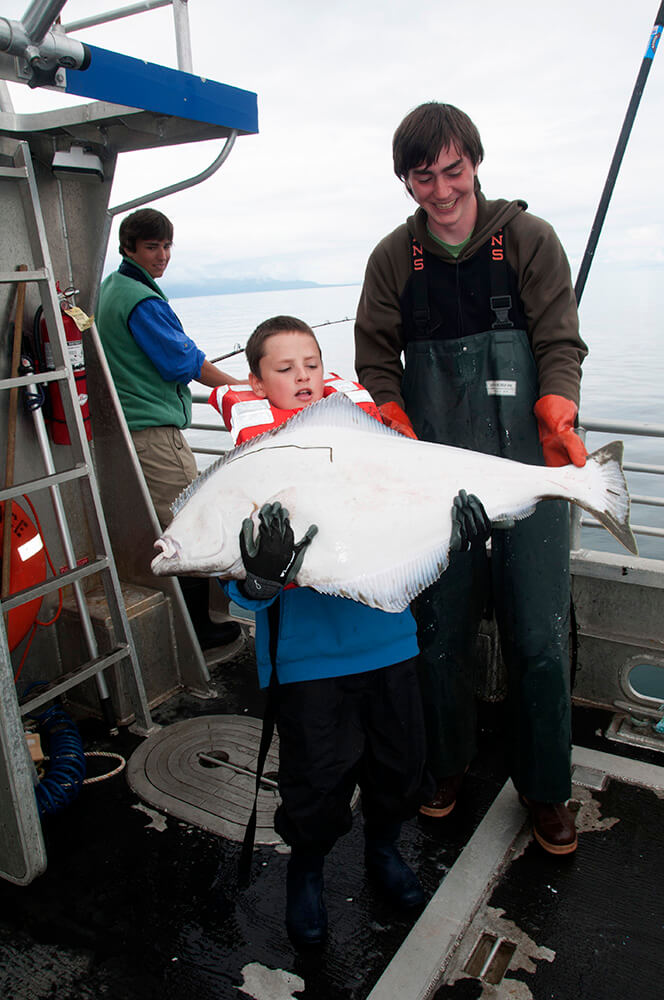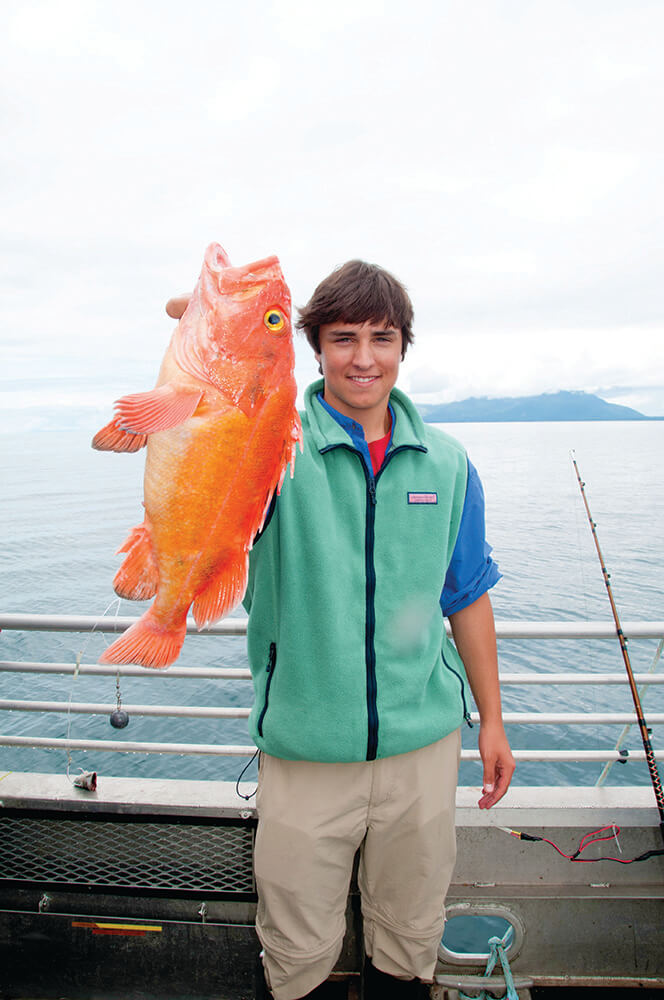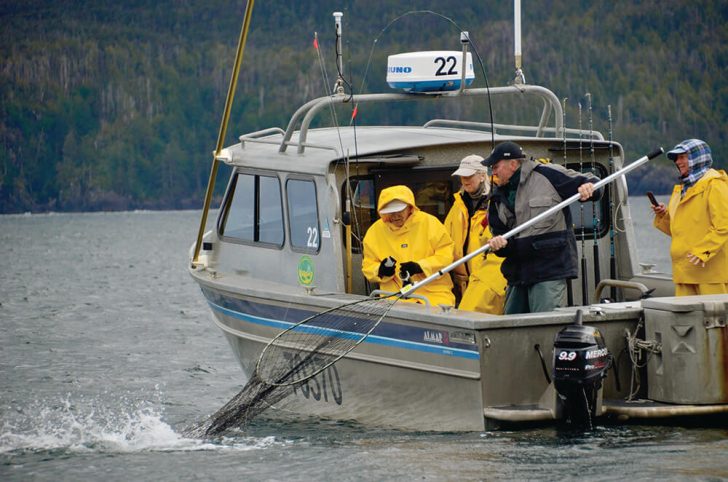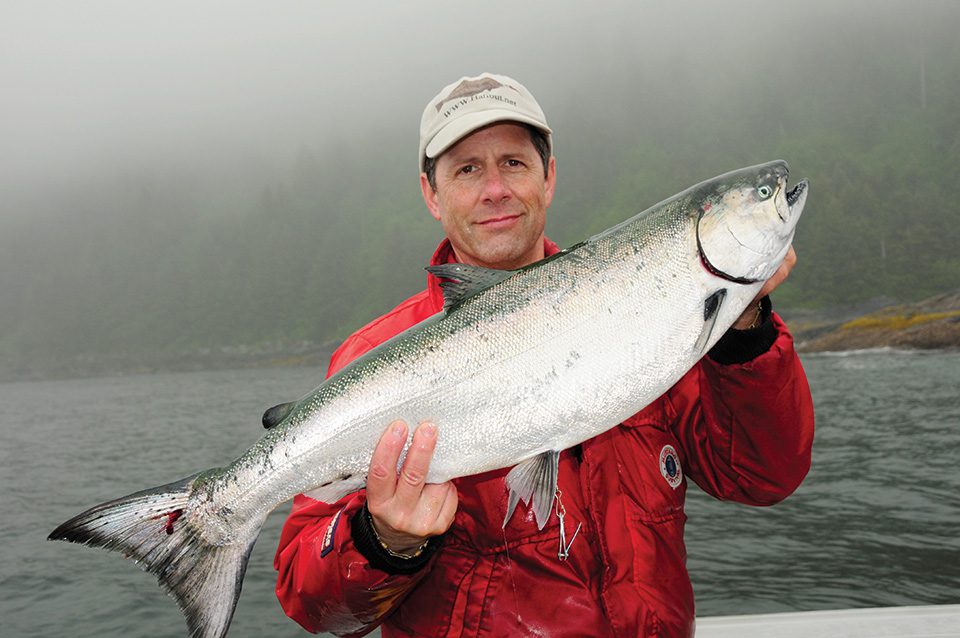By Christopher Batin:
It’s easy to understand why anglers delight in preparing for an Alaska fishing expedition. Some of the thrills come from the anticipation of getting gear and tackle ready, the big reels, 12-ounce and larger jigs, and huge circle hooks that have been honed to hypodermic-grade sharpness. It’s ensuring the cooler is properly marked with your name and address to transport the fillets you’ll be taking home, and most importantly, the arm curls and circuit training you’re doing.
The workouts are necessary, and it’s easy to see why.
Alaska saltwater fishing is not for the weak of arm or back. Halibut get big in Alaska, with fish reaching weights of 400 pounds, and lengths of 9 feet long. Even the 100-pounders you’re most likely to catch can slug it out with 300 feet of pump-and-lift jabs and rocket back to the bottom to start all over again for round two. There’s no giving up, no taking a breather for more than a few seconds. Once you are engaged, you fight to your limit. Your arm will get numb at times, your hand pulses with fatigue, and your back quivers in spasmodic tension, but the smile frozen on your face says it all.
This is saltwater fishing that’s as good as it gets.

But many anglers will want to jig for the five species of Pacific salmon: kings to 70 pounds, coho salmon to 20, and 4- to 8-pound pink salmon. While they might be the smallest of the Pacific salmon, ocean-bright pinks can max out an 8-weight fly rod. Best of all, odd-numbered years see the return of millions of fish, when creeks and rivers burst at the seams with their numbers. In Valdez alone, as many as 11 million salmon have returned in past years. Anglers delight in catching them along the shoreline near the Solomon Gulch Hatchery.
There are many places to use as a base camp to start your excursion. At the end of the Richardson Highway, Tim Bouchard of Valdez Outfitters likes fishing for big halibut on the outer rim of Prince William Sound, where it meets the abysmal Gulf of Alaska and its continental shelf drop-off to 14,000 feet. Worry not, Bouchard fishes hotspots like Montague Island, where the big fish feed in the shallow 60- to 120-foot depths. He guided his client to catch the 2016 Valdez Halibut Derby winner last year with a 270-pound fish.
For a taste of home-cooking mixed with a professional fishing lodge, Petersburg Sportfishing offers prime fishing on the Inside Passage in the seldom-fished waters near Petersburg. Anglers can opt for boat rentals for do-it-yourself fishing or guided saltwater fishing for salmon, halibut, rockfish and lingcod. This family-run business offers not only fishing but a variety of adventures and tips on enjoying the many fishing and area glacier attractions, as well as prime bear viewing and some fabulous cutthroat and rainbow trout fishing.
Of course, Kodiak Island offers superb deep-sea fishing, bordering the Aleutian trench. Huge halibut migrate from waters bordering these drop-offs and into the shallower food-rich shorelines of Kodiak and Afognak islands. While most fish range from 30 to 100 pounds, fish to 300 pounds and heavier have been caught off 
In Prince William Sound, Alaska Wilderness Outfitters offers a floating cabin for do-it-yourselfers who know how to catch salmon, halibut, rockfish and lingcod in nearby waters. Each of the four, fully equipped wannigans includes a full kitchen, crab traps boats and motors and directions on where the fishing is best. They’ll transport you to the cabins from Cordova to one of the several bays protected from the big-water weather. They also offered guided options in some of the most salmon-rich waters of south-central Alaska. Co-owner Katie Prijatel said guests clean and pack their catch in coolers. Alaska Wilderness Outfitters flies in daily to pick up the fish and drop off more ice. Then the fish is vacuum packed, boxed and frozen for the trip home.
Chris Batin is editor of The Alaska Angler, and producer of the instructional DVD, “Underwater Secrets of Halibut, Rockfish, and Lingcod.” For more than 40 years, he has run The Alaska Angler Information Service, which is a one-on-one consultation that helps anglers plan their Alaska fishing adventures.

